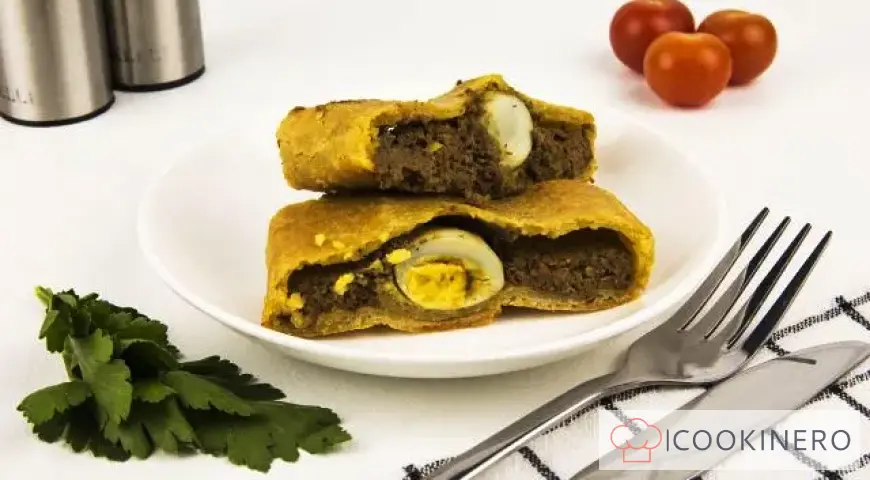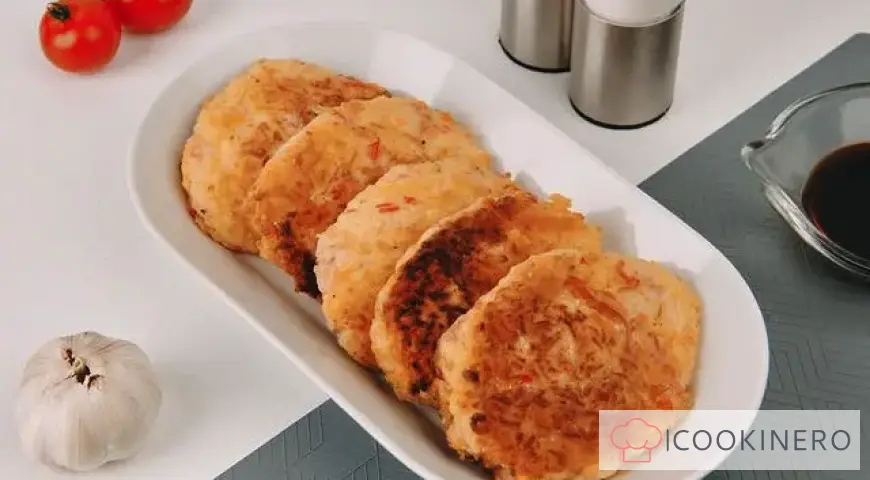Fried lagman
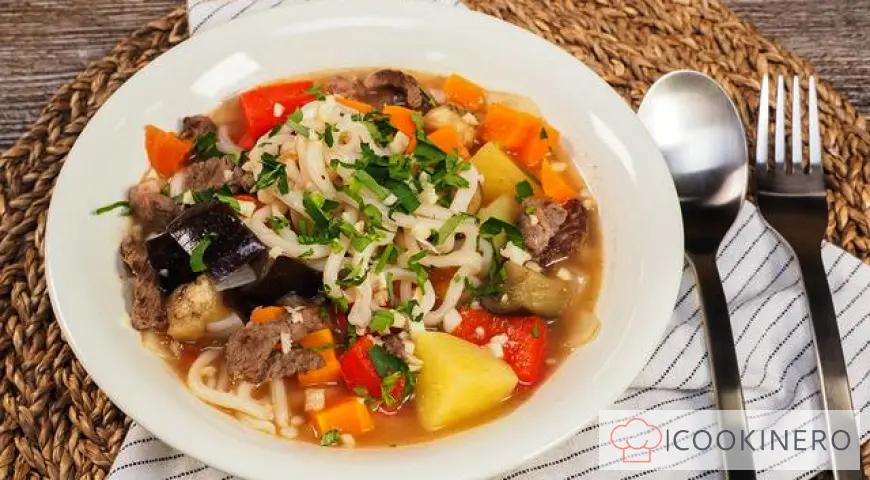
Fried lagman in Uzbek style is a tasty and filling dish with meat, vegetables and noodles. Lagman is called "the dish of love". It, like pilaf, is cooked at big celebrations, for example, at a wedding. On the second day of the wedding, the bride cooks lagman to show off her culinary skills. How to cook fried lagman at home in a frying pan? The classic recipe involves the use of beef, it can be replaced with veal or lamb. Cooking is simple if you follow the cooking steps.
How to cook Fried lagman
Step 1

Fry the beef. Heat a frying pan, pour in the oil and heat it up. Add the beef and fry, stirring, over high heat until golden brown. Reduce the heat to medium and add the chopped onion. Fry until the onion is translucent.
Step 2

Fry the vegetables. Add the carrots, eggplant, and bell pepper to the pan with the beef. Simmer for 5 minutes. Add the tomatoes and stir. Pour in enough water to cover all the ingredients in the pan. Add the spices: pepper, paprika, coriander, cumin, and star anise. Simmer the dish over medium heat for about 10 minutes, stirring occasionally. Then add the potatoes. Simmer for 5-8 minutes until the potatoes soften. Turn off the heat and let the lagman sit.
Step 3

Place the prepared noodles in a plate and pour over the meat and vegetables.
Fried lagman - FAQ About Ingredients, Baking Time and Storage
Reviews: 0
0 Overall ratingHave you already prepared this recipe? Tell what you think.
Write a review
Trending

Ojahuri from veal
Ojakhuri is a classic Georgian dish. In fact, this meat and potatoes are a win-win combination. You can use different types of meat for ojahuri. We will choose tender veal. Odeakhuri is traditionally served on a ketsi (clay plate) to keep the dish ho
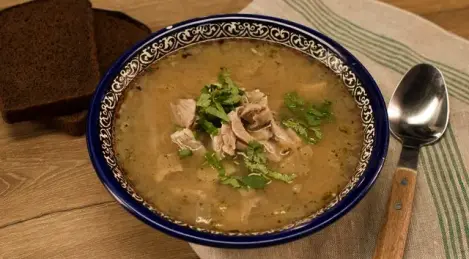
Kharcho with chicken
Usually kharcho is cooked in beef broth. But we decided to break the rules to get a slightly different, but no less tasty dish. Kharcho based on chicken will be more dietary, but in taste it will be the same famous Georgian soup, which you can easily

Armenian Lavash Roll with Stuffing
Perhaps the most versatile dish you can think of is a lavash roll with filling, because you can stuff lavash with whatever your heart desires. Lavash with vegetables, with salad, with canned fish, sweet lavash with cottage cheese. The choice of filli
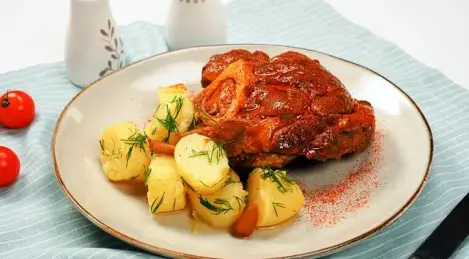
Beef knuckle
The special value of the beef knuckle (the lower part of the beef carcass leg) is the marrow bone, rich in nutrients. The recipe recommends using meat from young animals no more than 20 months old. It can be distinguished by the rich red and pink col

